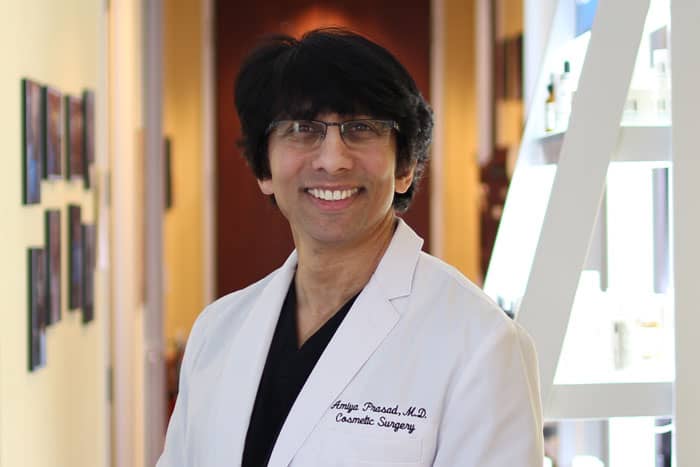Top Causes of Hair Thinning in Men and Women and How to Address Them
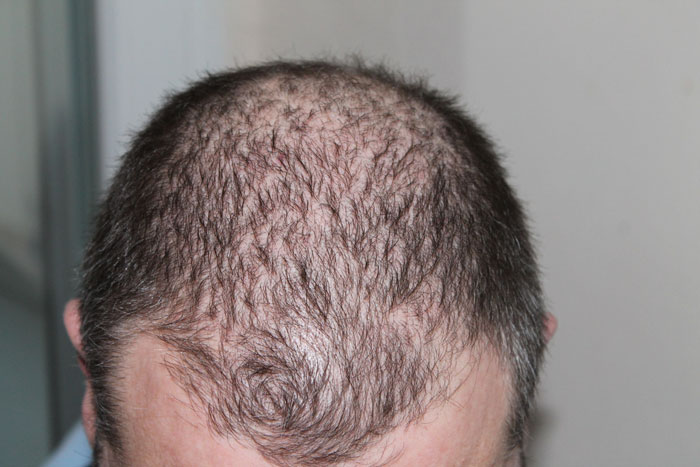
Noticing that your hair is thinning is an understandable concern for people who are facing the possibility of pattern hair loss. While pattern hair loss accounts for the majority of hair loss cases, it’s crucial to rule out other causes of hair thinning before considering treatment. Women have more potential causes of temporary hair shedding as well as hair thinning than men, so it’s particularly important for women to have the cause of their hair thinning diagnosed by a medical doctor.
Prior to 2011, I was trying to improve the results of hair transplant surgery by increasing hair graft survival. I used an advanced wound healing material called extracellular matrix by the company ACell that I was already using to help heal surgical incisions, such as in facelift surgery.
What happened about a year later was that I noticed native hair that wasn’t transplanted had become thicker. This discovery led me to refine the treatment using extracellular matrix along with platelet-rich plasma ( PRP) as a standalone treatment to thicken thinning hair due to male, or female pattern hair loss, which we now call TrichoStem Hair Regeneration.
Why Your Hair is Thinning: The Role of Genetics
Pattern hair loss is the most common cause of hair thinning. About 95% of all hair loss cases in both men, and women are caused by genetic pattern hair loss, also called androgenetic alopecia or androgenic alopecia. As the name indicates, pattern hair loss is caused by genetics, so it is not caused by any illness or behavior.
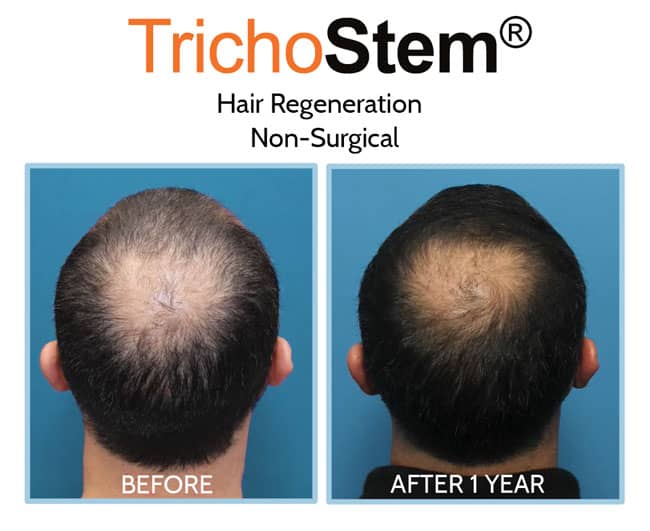
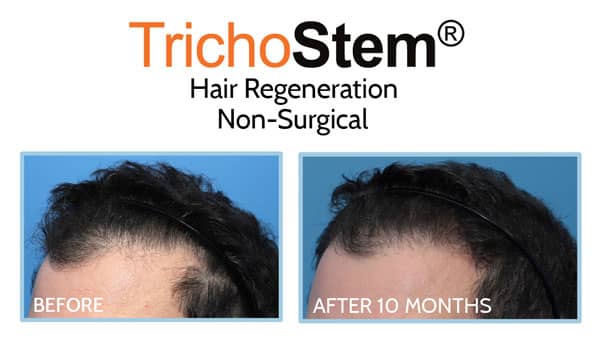
People with pattern hair loss suffer from progressive hair thinning, where hair grows, then normally sheds. Shed hair grows back, but people with pattern hair loss experience shed hair growing back thinner, as well as a longer than usual delay in hair regrowth.
Pattern hair loss not only causes progressive hair thinning, but also continual hair follicle miniaturization, eventually leading to loss of the hair follicle. Pattern hair loss also seems to limit the number of hair regrowth cycles, so shed hair takes longer to grow back, contributing to the bald appearance.
Causes of Hair Thinning in Women: Beyond Genetics
Women do have more possible causes of hair thinning than men. While changes in hormone levels in life events such as pregnancy, childbirth, and postpartum can cause temporary hair shedding, hormone imbalances can also cause hair thinning. Polycystic ovarian syndrome (PCOS), also called polycystic ovarian disease (PCOD), can cause the hair to thin. PCOS is treated with hormone therapy, often with the contraceptive pill, which can return hair to its prior thickness. PCOS is usually treated by a gynecologist who can assess the hormone imbalance, and prescribe the appropriate hormone therapy.
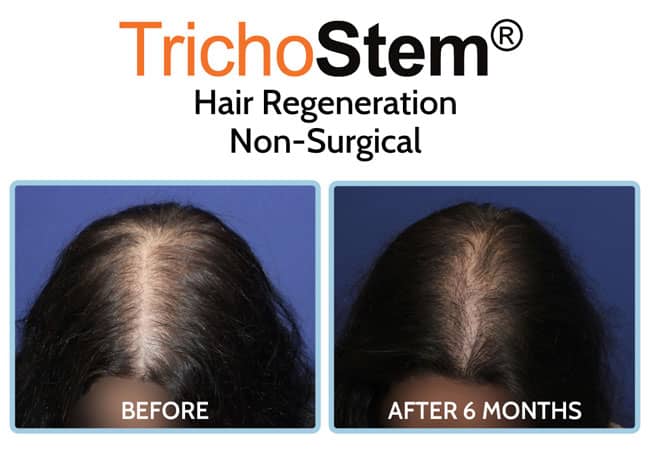
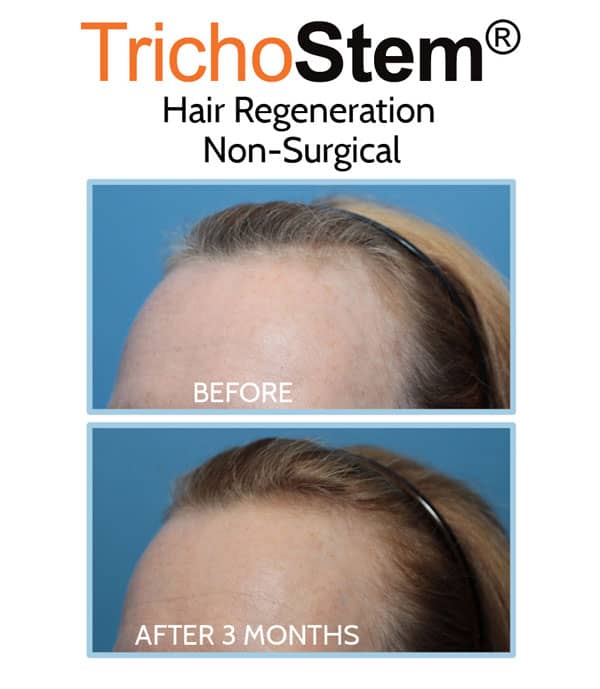
Other hormone imbalances that affect both men and women can be due to the thyroid. Hyperthyroidism, where there is an overactive thyroid in hormone regulation; or hypothyroidism, which is the opposite, where the thyroid is underactive in maintaining hormone levels. An overactive, or underactive thyroid can cause diffuse hair thinning throughout the scalp, a pattern that appears similar to female-pattern hair loss. Scalp biopsies are sometimes needed to diagnose female pattern hair loss from thyroid-related hair thinning. Thyroid-related hair thinning can be reversed by restoring normal activity of the thyroid, which is usually treated by an endocrinologist.
Aging is a broad cause of hair thinning, which can be tied to pattern hair loss as well as declining hormone levels. Male pattern hair loss follows the Rule of Decades, where 20% of men in their 20s have pattern hair loss, 30% of men in their 30s, and so forth. The Rule of Decades also shows that the older men get, the more they experience hair thinning due to pattern hair loss. Generally, men with the highest sensitivity to the hormone dihydrotestosterone (DHT) experience an earlier onset of hair thinning, such as in their 20s or 30s, than men with less DHT sensitivity, who notice thinning hair in their 40s or older. 70% of men in their 70s have noticeable hair thinning, so the incidence of male pattern hair loss does increase with age.
The incidence of pattern hair loss in women also increases with age, but the main cause of female pattern hair loss has not yet been identified by science. 30% of women over the age 30 have hair thinning associated with pattern hair loss, which increases to 50% of women over the age 50.
Effective Hair Loss Treatments
Even though the root cause of female pattern hair loss has yet to be identified, we can thicken thinning hair and stimulate hair growth in women at any adult age. With a confirmed diagnosis of female pattern hair loss, we have successfully thickened thinning hair, stimulated hair growth from follicles that are still viable but have been affected by pattern hair loss, and increased visible scalp coverage in over 99% of our female pattern hair loss patients with our TrichoStem Hair Regeneration treatment. After our injection treatment, our female patients no longer need to use more limited hair loss treatments such as minoxidil, which requires daily application to delay hair shedding so the scalp appears to have more hair.
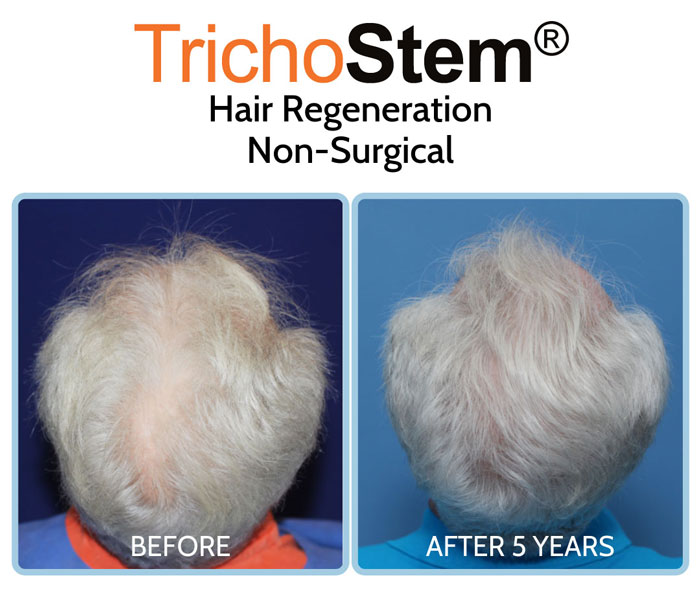
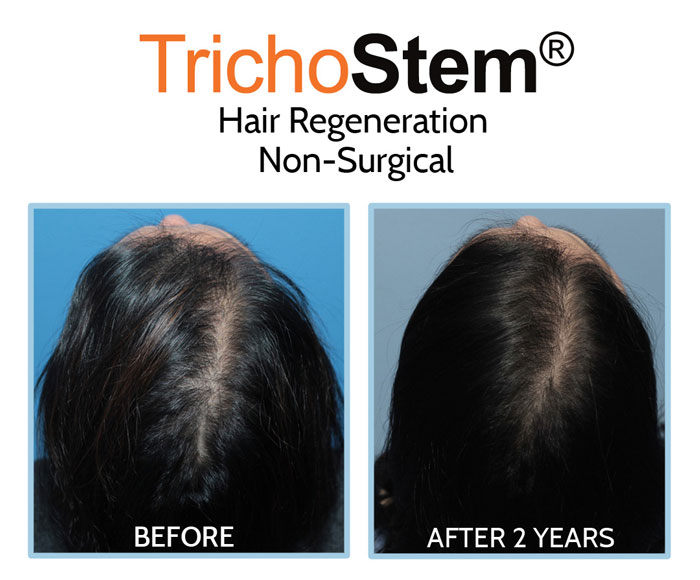
The testosterone blocker spironolactone, which has limited to no benefit for female-pattern hair loss, is also no longer needed after our injection treatment. For female pattern hair loss, our TrichoStem Hair Regeneration treatment is actually a standalone treatment, with only 1-2 treatment sessions needed for benefits to last 3-5 years, with no additional medication or treatment needed.
While estrogen levels have not been tied to female pattern hair loss, estrogen is an important factor in hair health and thickness in women. A decline in estrogen levels due to menopause can cause hair to thin. Hormone therapy in the form of estrogen can make thinning hair thicker and healthier. Women experiencing hair thinning after menopause can benefit from estrogen levels raised through hormone therapy, which is usually prescribed by their gynecologist. Hair thinning in men with pattern hair loss usually affects the frontal hairline, the mid-scalp, and the crown, with the sides and the lower back of the head genetically resistant to hair thinning.
A major factor in male pattern hair loss is a hair follicle sensitivity to the male hormone dihydrotestosterone, or DHT, which is a major cause of hair thinning. DHT-sensitivity is not the only cause of hair thinning in men, because when DHT-formation is prevented with prescription DHT-blockers like finasteride, progressive hair thinning is slowed, but it’s not completely stopped or reversed.
Our male pattern hair loss patients are able to thicken their thinning hair with the TrichoStem Hair Regeneration treatment, both in patients who have been taking finasteride for years and those not currently on finasteride, even if our treatment is not a DHT-blocker. However, a DHT-blocker like finasteride is still prescribed to our male patients, particularly for younger men with high DHT sensitivity, so the benefits of the treatment last longer. Only 1-2 injection treatments are needed with TrichoStem Hair Regeneration, which can last 3-5 years.
For men with high DHT sensitivity, a DHT-blocker like finasteride is needed for maximum results and longevity of effectiveness; otherwise, the treatment won’t last as long.
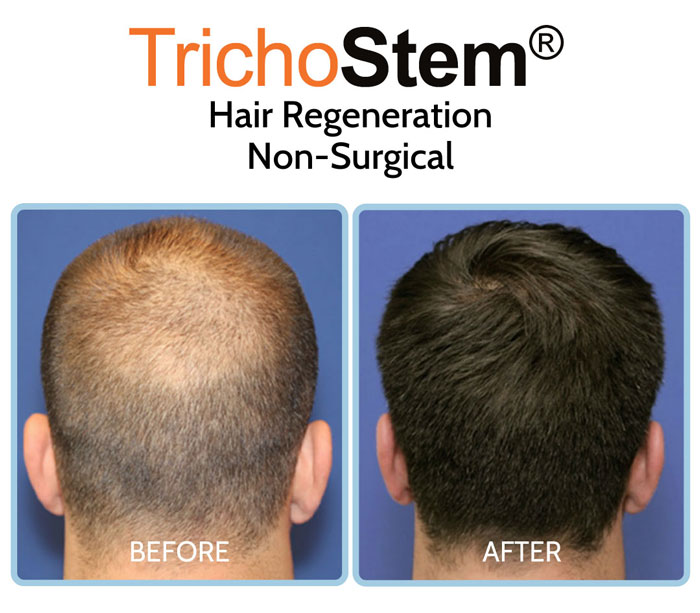
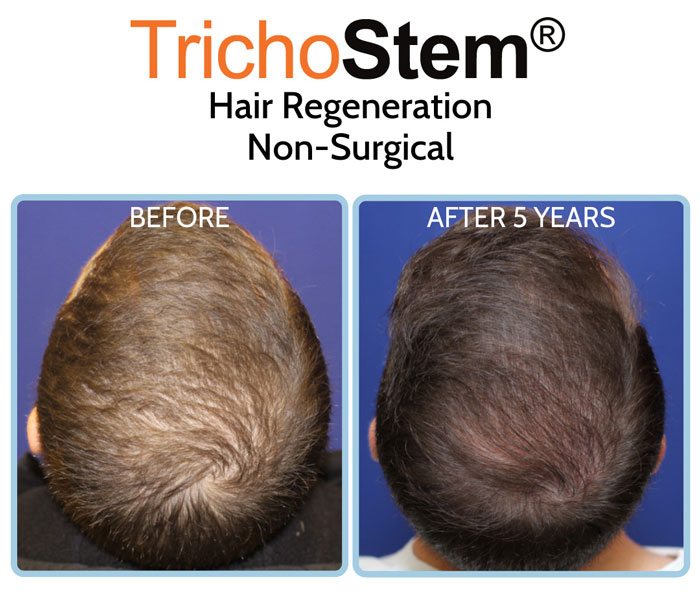
However, we have achieved 5 years or longer of effectiveness in men with less acute DHT-sensitivity who were not on finasteride, but these patients usually have a later onset of male pattern hair loss, usually in their 40s and 50s, or even older.
Treating hair thinning does depend on its cause, but the majority of cases are due to pattern hair loss. With more possible causes of hair thinning in women than there are for men, it’s particularly important for women to have a proper diagnosis by assessing possible hormone imbalances, and maybe needing scalp biopsies to confirm pattern hair loss.
Hair thinning can be treated to make the hair grow thicker, but the right treatment starts with the right diagnosis. I hope you found this information from my experience helpful.
Hair Thinning Treatment Manhattan, NYC and Long Island, New York
Dr. Amiya Prasad is a Diplomate of the American Board of Cosmetic Surgery, and a Fellowship-trained oculofacial plastic and reconstructive surgeon. He has performed hair transplant surgery since he first opened his practice over 25 years ago. He developed TrichoStem® Hair Regeneration for non-surgical treatment of pattern hair loss in 2011, and has since treated thousands of patients from around the world.
If you’re interested in recommendations for your individual situation, you may fill out the form below to schedule a consultation or call any of our offices at (212) 265-8877 in Manhattan, New York City; (516) 742-4636 in Garden City, Long Island; or (703) 356-1336 in Vienna, Virginia.

